Quick Answer
Most patients need to wear compression socks between 1 and 12 weeks after surgery.
- Hip surgery: 2–6 weeks
- Knee surgery: 4–8 weeks
- Abdominal surgery: 1–4 weeks
- Heart/vascular surgery: 6–12 weeks
Always confirm with your doctor.
Introduction
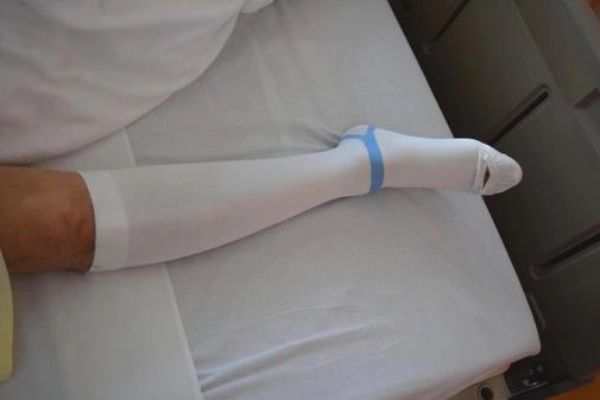
Undergoing surgery can be a big step. Post-operative care is crucial for a smooth return to health. One common, yet often confusing, part of this care involves compression stockings.
These special socks provide gentle support. They promote healthy blood flow. They also reduce swelling. And they help stop serious problems like blood clots. Explore our anti-thrombosis compression socks for DVT and post-operative recovery. Many people search for answers like “when to stop DVT socks” or “how long to wear surgical stockings after an operation.”
Over 40% of patients remove compression socks too early. This raises the risk of blood clots. We will help you understand the core questions. Like, “How long should I wear them?” Or, “Is it safe to stop now?“
This information comes from our long experience in making compression socks. We understand how important they are for recovery.
Why Compression Stockings Are Essential After Surgery
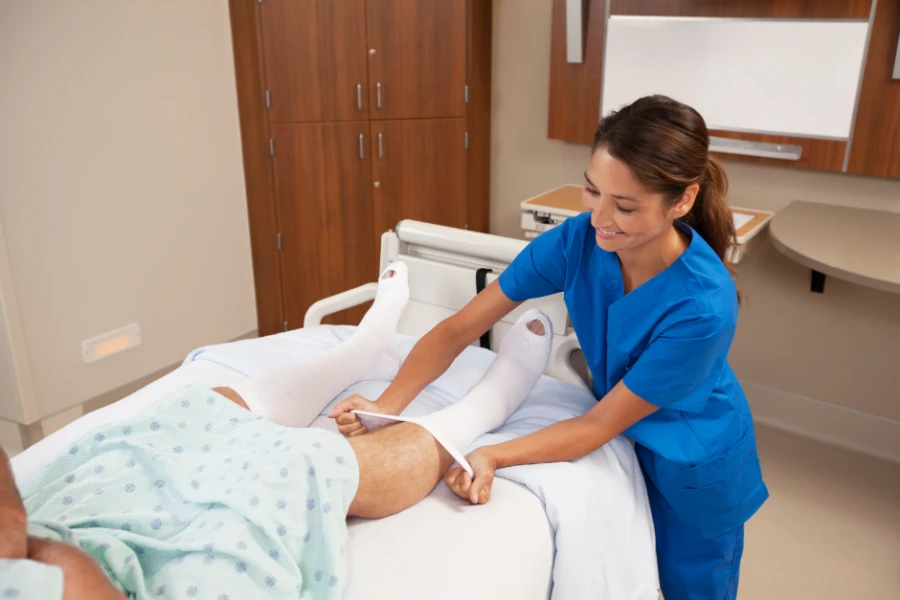
Compression stockings are tight socks that press on your legs. They help blood move toward your heart. They stop fluid from building up. This can cut swelling in your legs. They also lower your chance of deep vein thrombosis (DVT). That is a dangerous blood clot in your deep veins.
Medical Benefits of Compression Therapy
Compression socks do these things:
- Improve blood flow
- Reduce swelling
- Lower risk of DVT after surgery
These benefits help you heal faster. They also ease pain and soreness. The steady pressure is gentle but effective.
Types of Surgeries Where Compression Is Common
- Lower limb surgery
- Abdominal surgery
- Cardiovascular procedures
These surgeries often lead to less movement. That raises swelling and clot risk. Doctors often recommend compression after these surgeries. It is because they want to keep patients safe and pain-free. Compression stockings help protect your legs.
Key Factors Influencing Your Compression Sock Duration
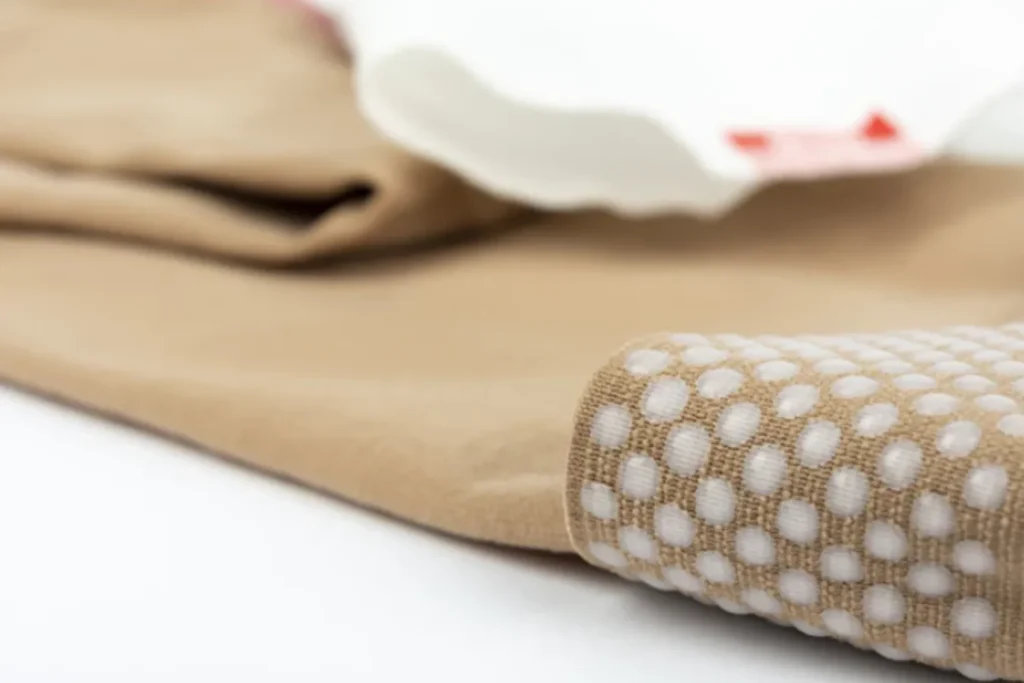
Typical Removal Timelines by Surgery Type
The amount of time you need to wear compression stockings depends on your surgery. Some people may need them for a few days. Others may need them for several weeks. It depends on how serious the surgery was and how your body heals. If you remove surgical stockings too early or stop wearing compression socks while still in recovery, you may face a higher clot risk.
Hip Surgery (2–6 weeks)
If you had hip surgery, you might need compression stockings for 2 to 6 weeks. This is common because hip surgery reduces movement. You may stay in bed or sit more during recovery. That raises the risk of blood clots. Compression stockings help reduce that risk. Once you start walking more and swelling goes down, your doctor may say you can stop wearing them.
Knee Surgery (4–8 weeks)
After knee surgery, swelling can last longer. It often moves down to your lower leg or ankle. Compression stockings help reduce that swelling. You may need to wear them for 4 to 8 weeks. Doctors often check your leg size and comfort level to decide when to stop.
Abdominal Surgery (1–4 weeks)
If your surgery was in the abdomen, your legs may swell because you are lying flat a lot. You may need to wear stockings for 1 to 4 weeks. How long depends on how active you are after the procedure.
Cardiac or Vascular Surgery (6–12 weeks)
These surgeries can raise your clot risk the most. Blood flow changes more with heart or vein surgery. Patients often need to wear compression socks for 6 to 12 weeks. These timelines are longer because the body heals slower in these cases.
| Surgery Type | Typical Compression Sock Duration | Key Mobility Checkpoints | Early Warning Signs to Watch For |
|---|---|---|---|
| Hip Surgery | 2–6 weeks | Increasing ability to walk with support | New calf pain, redness, swelling |
| Knee Surgery | 4–8 weeks | Improved knee bending, less swelling | Persistent swelling, worsening pain |
| Abdominal Surgery | 1–4 weeks | Regular walking, getting out of bed easily | Leg pain or tenderness |
| Cardiac Surgery | 6–12 weeks | Gradual return to daily activities, stable heart rate | Increased leg swelling, breathing issues |
Mobility & Activity Level
More walking helps blood flow. If you move a lot, you may stop sooner. If you stay in bed or use crutches, you must wear socks longer.
Medical History
If you had blood clots before, wear longer. Diabetes or vein issues also mean more time. Your history guides your doctor’s advice.
Swelling & Discomfort Indicators
Watch for these signs:
- Red or warm skin
- Sudden swelling return
- Itchy or tight spots
If any appear, keep wearing socks. These signs show your legs need more support. Here is how each factor plays out:
| Factor | Effect on Duration |
|---|---|
| Major surgery | +2–4 weeks above baseline |
| High mobility | –1–2 weeks if you walk daily |
| Prior clot history | +2–6 weeks based on risk |
| Persistent swelling | Extend until swelling stops for 3 days straight |
Talk to your doctor about your specific case. They will balance these factors for safe removal.
If you notice aching or unusual discomfort, read our guide on why your legs might ache after wearing compression socks.
How to Transition: When to Stop Wearing Compression Socks After Surgery
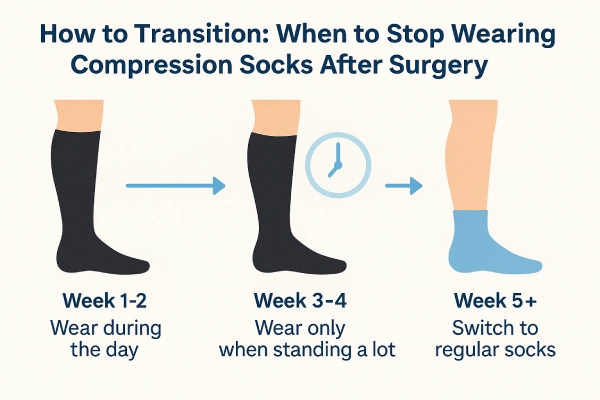
Instead of suddenly taking off compression socks, follow a tapering plan…
3-Step Tapering Plan
- Week 1–2 after your doctor says you can reduce use
Wear socks during the day. Take them off at night. - Week 3–4
Wear only when standing a lot or walking long distances. - Week 5+
Switch to support socks or regular athletic socks.
Support socks still help. They’re not as tight. But they ease you off the stronger compression.
Choosing Transitional Socks
Some socks are made for step-down support. These have 10–15 mmHg pressure. They help:
- Travelers
- People who stand all day
- Patients moving from recovery to daily life
They are easier to wear, come in casual styles.
Remember, this is a general guide. Always adjust your tapering plan based on your doctor’s specific advice and how your body responds. Your comfort and safety are paramount throughout this process.
For Brands, Retailers & Distributors
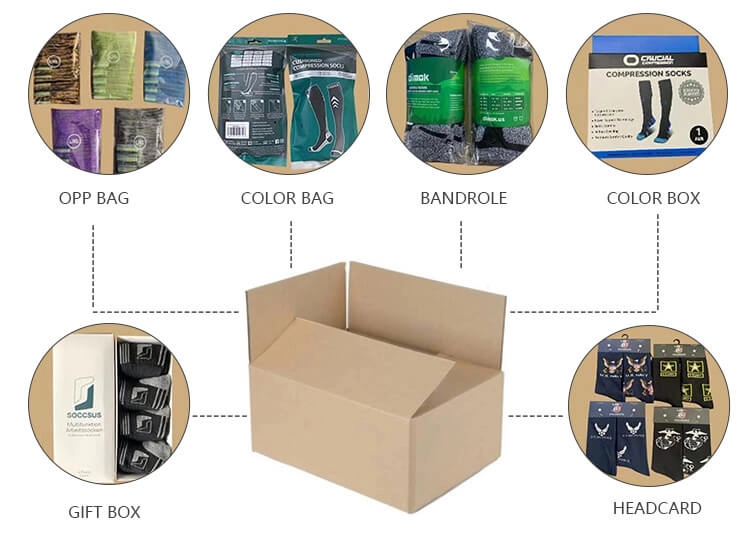
Compression stockings are not just a product. They’re part of the patient’s healing plan. Many users feel confused about which type to wear, how long to wear them, and what to do when it’s time to stop. This is a key moment where brands and retailers can provide real value—not only by selling the product, but by solving the problem.
Why You Should Rethink Product Bundling
Patients rarely understand pressure levels or timelines. Many remove medical-grade socks too early or fail to switch to transitional socks. That’s where smart packaging and product bundling come in.
You can offer value and clarity with a compression sock recovery kit, including:
- 1–2 pairs of medical-grade compression stockings (15–30 mmHg) for post-surgery use
- 1–2 pairs of transitional low-compression socks (10–15 mmHg) for the tapering phase
- A clear usage guide showing when and how to switch
- Optional: QR code linking to a how-to video or recovery tips
This approach meets real patient needs—and gives you a product edge.
Think Like Your End Users
Many buyers are not the patient themselves. They may be a caregiver, a family member, or a nurse. They’re looking for peace of mind and clear answers. Packaging that says:
- “Start with medical compression”
- “Then switch to light support”
- “Here’s how to tell when you’re ready”
…can turn a confusing recovery into a smoother experience.
| Problem Customers Face | Your Product Response |
|---|---|
| “I don’t know when to stop wearing them.” | Add a visual timeline on the packaging |
| “Are these socks too tight for now?” | Add visual timeline on the packaging |
| “What do I wear after I stop medical socks?” | Include support socks in bundle |
| “How do I put them on?” | Add guide or QR video instructions |
For a step-by-step guide, check out our example video on how to put on compression socks:
Providing a post-surgery sock bundle not only adds convenience—it also builds trust and loyalty. It shows that your brand understands recovery from start to finish.
FAQs About Wearing Compression Socks After Surgery
Q1: When can I take off compression socks after knee surgery?
Most patients need to wear compression socks for 4–8 weeks after knee surgery. The exact time depends on swelling, mobility, and your doctor’s advice. Never stop suddenly—ask your doctor before removing them completely.
Q2: Is wearing compression socks to bed necessary after surgery?
In most cases, yes—especially in the first 1–2 weeks after surgery. Compression socks help reduce clot risk during long periods of rest. Your doctor may later allow you to remove them at night once you are moving more during the day.
Q3: What happens if I stop wearing compression socks too early?
Removing compression socks too soon increases the risk of deep vein thrombosis (DVT), swelling, and poor circulation. If you notice leg pain, redness, or sudden swelling after stopping, put them back on and consult your doctor immediately.
Q4: How long do I wear compression socks after a C-section?
After a C-section, compression socks are usually recommended for 1–2 weeks, or until you are walking regularly and swelling has gone down. Some women may need them longer if recovery is slower or if they have a history of clotting issues.
Q5: Can I shower without compression socks?
Yes. You can remove compression socks while showering, but you should put them back on right after drying off. Avoid leaving your legs unsupported for long periods.
Q6: Should compression socks feel tight or uncomfortable?
Compression socks should feel snug but not painful. If you experience numbness, burning, or extreme discomfort, the socks may be the wrong size or too strong—contact your healthcare provider for adjustments.
Conclusion
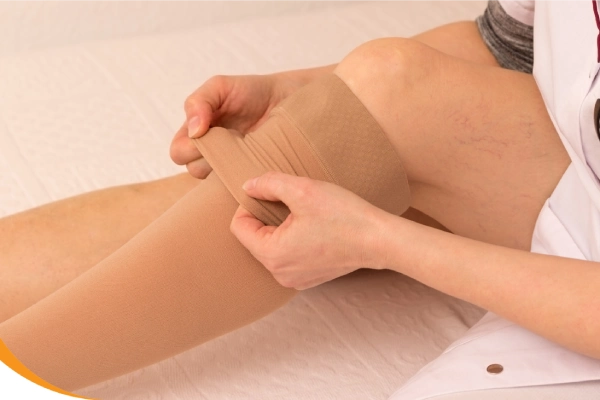
Knowing when to remove compression socks after surgery depends on the surgery type, the patient’s condition, and the doctor’s advice. Safe timelines provide guidance, but recovery needs close monitoring. If swelling or discomfort continues, socks should be worn longer. Transitioning to lighter support socks must be gradual to avoid setbacks.
Brands, clinics, and distributors can improve patient care by offering customized sock solutions for each recovery phase—from medical compression to everyday support. If you want to develop tailored compression sock bundles or private label products, we are ready to help you design and produce quality socks that meet your market’s needs.
